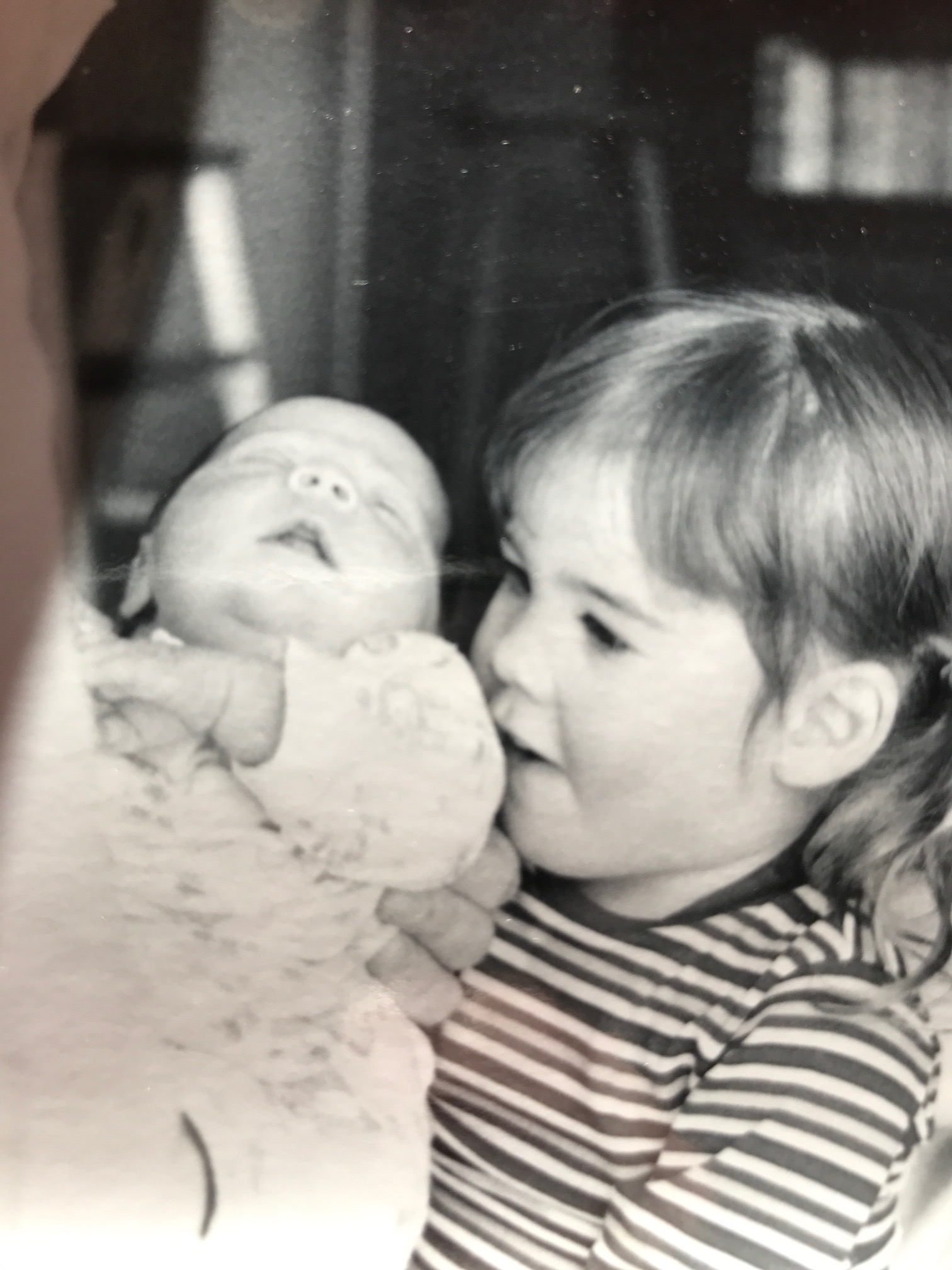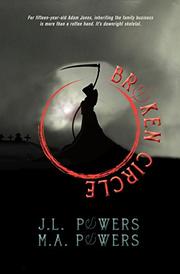Today we welcome and M.A. and J.L. Powers to the blog. We appreciate their willingness to answer questions about Broken Circle, their writing life and more.
What was the inspiration for this world where souls are being shepherded after bodily
death?

M.A.: When I began thinking about personifications of death (such as the Grim Reaper) and what it would mean to shepherd the souls of the dead, the first image that popped into my mind was, of course, Charon poling clients across the river Styx in a flat-bottomed skiff. For the newly dead, the river Styx represents an insurmountable obstacle to the afterlife unless they are given, or pay for, help by a knowledgeable guide with a boat. This image turned into a conscious and subconscious working framework for our concept of Limbo, that unique place between life and death where a newly dead soul requires help to navigate.
Our Charon characters, Soul Guides, come from human families loosely based on the legends of supernatural personifications of death such as the Angel of Death, Grim Reaper, and Dullahan. Like Charon, they have special abilities to navigate Limbo and help the newly dead overcome their own personal Styx (an obstacle to accepting death). This “River Styx” for each person (“Limbo”) is developed subconsciously throughout their lifetime.
For us, the concept gave us a great vehicle to explore people’s fears, wants and desires and it is relatable because we all struggle to accept our own mortality. In this world, only someone who has completely accepted their own person, and has become friends with the concept of mortality, could cross Limbo without help from a guide. I feel, as humans, this is a very rare condition. Our refusal to accept death is a refusal to accept our own life and struggle.
The monster Adam repeatedly encounters is rather terrifying. I felt hints of La Llorona there. Was she an influence?

J.L.: I’m sure La Llorona was a subconscious influence. I don’t want to say too much about the similarities between La Llorona and the monster character in the book because it includes too many spoilers for readers who haven’t read the book yet. But let me just say that Matt and I grew up in El Paso, Texas, where the story of La Llorona is beloved and much told. As you know, I work at Cinco Puntos Press and our children’s picture book La Llorona is one of our best-selling books so the tale is something that is both extremely familiar and undoubtedly was an influence.
What was your favorite part about writing Broken Circle?
M.A.: First, my favorite part was writing with my sister who is a great idea generator and developer and could make my wild, and often pathetic, stab at writing dialogue pop!
Also, the laughter. We have a similar sense of humor and had laughing fits over parts of the book that may not seem funny to some readers.
Second, I was trained rigorously in biochemistry and genetics. My favorite part of
science was the intellectual pursuit of generating a hypothesis. Hypothesis is just a
fancy word for “scientific fiction production” and is the state of acquiring a handful of
seemingly unrelated and confusing facts and imagining a scenario where they do make sense. Furthermore, you have to propose tests that will confirm or reject this scenario. Although it did have its high points, I was not particularly fond of performing those tests because it was often repetitive and tedious for me.
Writing Broken Circle was a constant stream of generating hypotheses (In our case,
fiction based on world building rules instead of fiction based on a set of known facts)
and did not include any of the lab bench drudgery!
What does the collaboration process look like for you two?
M.A.: It’s a chaotic miasma of interruptions from our children and herky-jerky writing all dependent on babysitting schedules and poop. Yeah, when something smells funny, it’s time to stop writing and get out fresh pampers.
Our worst interruption was on a Skype call. I put my 9-month- old in the Bumbo on the table and turned my back to get the little table thing to snap her in when I heard a dull “THUNK” and then crying. She had launched herself out of the snug foam leg holes and off the table and was lying in a small heap of brown corduroy and pink onesie on our scratched hardwood floor.
Horrified, I scooped her up and yelled goodbye to Jessica as I rushed off to the emergency room, fearing I had irreparably broken my baby. My daughter was fine! In fact, she had stopped crying by the time I had put her in the car seat but I forged ahead, determined to do penance at the hospital by being “That Dad” who put his kid on the table and turned his back. Obviously, I needed a stiffer penance to get right with the god of muse. The book we were collaborating on at the time has yet to be finished. Karma?
Did you do any specific preparation before crafting the characters who are from cultural backgrounds that are different from your own?
J.L.: Over the years, I’ve become known for writing books about characters who are from cultural backgrounds that are different from my own. The process is similar each time. First of all, I should say that in most cases, it’s sort of organic. I don’t pull a culture from my hat and think, ‘Let me write about XYZ.’ For me, I am writing out of both my personal experiences with cultures I’ve lived within as well as professional knowledge. Just as an example, we have a Latina character in this book, Liliana La Muerte. As I said, Matt and I grew up in El Paso, Texas, which is 75% Latin@ and, specifically, Mexican and Mexican-American. We grew up in a neighborhood where we were the only white kids. In many ways, Mexican and Mexican-American culture is much more familiar to us and safe for us than the white American mainstream culture that we look like we’re supposed to be from. But of course, that level of familiarity doesn’t give us a pass. I try to do meticulous research: reading books and articles, talking to people, traveling as needed, immersing myself as much as possible so that I can present authentic and accurate characters, and asking other people from those cultures to read it and be brutally honest about errors….
Broken Circle is the beginning of a series. Are you able to share anything about the future books?
J.L.: That’s a scary question! We are working on Book 2, and I’m also starting to work on Book ½ (yes, there is a Book ½ in our series, just like the ½ chapters….). One thing you might be interested to know is that Book 2 starts almost at the same place where Book 1 leaves off, and it will end up in Chicago. So Chicago, here we come!
Also, we will explore the world of Limbo and Soul Guides a bit more in-depth as that has been one critique from readers—they’d like to have more information or world-building about those concepts. You’ve spoken, we’re listening, we’ll respond!
I think people should know that we planted some things in the first book that will emerge as bigger plot points in later books, but we tried to plant them in a way that people don’t notice them in the first book. So hopefully it’ll be this wonderful exploration over time….
You’re a blogger at The Pirate Tree. Could you share a little about that work and why you
are involved there?
J.L.: I helped to start The Pirate Tree with other like-minded authors who want to examine children’s literature positively from a social justice angle. This is a very broad mandate. A lot of times, people think that if you’re looking at social justice and children’s literature, you’re looking for issue-driven books. Not so! In fact, I definitely am not interested in books that appear preachy or have a moral attached. Any book can be examined for how it treats the human condition and how it analyzes society and the status quo. And good literature automatically does that. Our goal is to present and celebrate books that we think demonstrate a commitment to developing a more peaceful and just world.
In addition to being an author, you’ve also worked in publishing with Cinco Puntos Press and now you’re starting Catalyst Press. Can you tell us a little about that work and what keeps you working to publish the work of others?
J.L.: I started working with Cinco Puntos in 2002, if you can believe it! And I still work for Cinco Puntos Press. I absolutely love our books, which are some of the most important multicultural books being published today. We have been publishing diverse books since the 1980s—long before there was any kind of movement for it.
And I started Catalyst Press and Story Press Africa because I wanted to publish African writers and African-based literature. There’s a huge gap. Eventually, I want to branch out to publishing other indigenous literature from other parts of the world, but this is where I’m starting because of my own expertise—I have two graduate degrees in African history. And I can’t state often enough how much I love Africans and the continent of Africa….
I love to write, but I also love books altogether. I believe books change the world. So to me it is a supreme pleasure to be able to present important books to the world that might be overlooked by mainstream publishers.
You may find M.A. and J.L. Powers at www.powerssquared.com


